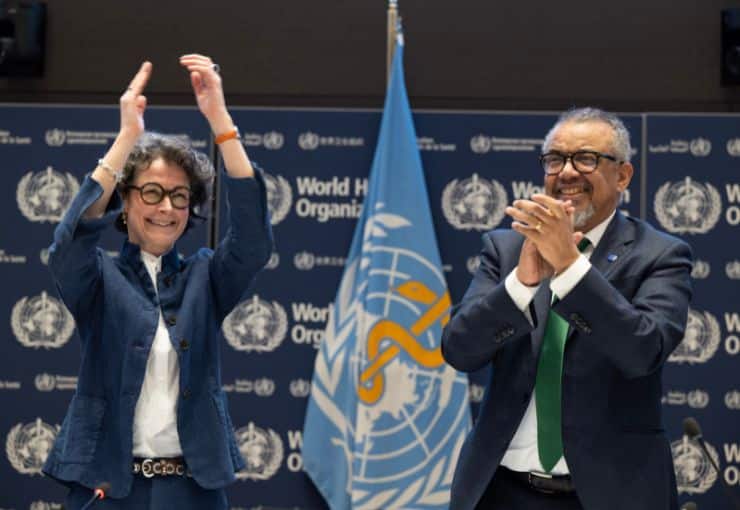After more than three years, the WHO Member States concluded negotiations on a draft pandemic agreement. The proposal aims to strengthen global collaboration on prevention, preparedness and response to future pandemic threats. We are cautiously optimistic about the provisions in the draft agreement. They can provide a stepping stone to firmer, fully effective action.
Spurred by the Covid-19 pandemic, WHO Member States established the Intergovernmental Negotiating Body (INB) in December 2021 to draft and negotiate an international instrument for strengthening pandemic prevention, preparedness and response. Now, an agreement is ready for consideration at the upcoming World Health Assembly in May.
Since the start, we have been following the developments. Although being positive about the effort to enhance global collaboration on this important topic, we have also voiced concerns about specific elements of the agreement: access to medicines, financing of the pandemic agreement and health workforce. Now that a final draft is ready, we conclude that some elements have progressed in the right direction, while others are left unaddressed.
In general, we applaud the one health approach to pandemic prevention, aimed at balancing and optimizing the health of people, animals and the environment. Moreover, we recognize that it is quite an achievement of the WHO and its Member States to have reached this international agreement in a time of growing division in the world.
Access to medicines
Ensuring equitable global access to vaccines, diagnostics and other medical products is crucial in the prevention of pandemic diseases as well as during a pandemic. Therefore, we had hoped to see stringent commitments to the sharing of technology, know-how and intellectual property in the WHO Pandemic Agreement. Unfortunately, this has been blocked by high-income countries, the European Union in particular.
The final text does contain provisions to improve equitable access to pandemic countermeasures, such as a commitment to achieve rapid scaling up of production and equitable geographical distribution, cooperation on developing new pandemic-related products and a provision to encourage government-funded innovations to be shared through licensing and technology transfer.
While some high-income countries wanted the Pandemic Agreement to specify that technology transfer can only happen on voluntary terms, this has been prevented. Countries can still make use of TRIPS flexibilities and other measures in case of failure of voluntary sharing of technology and IP. (Also see this blog by Medicines Law & Policy).
Future work is planned to develop an instrument to establish a WHO Pathogen Access and Benefit Sharing (PABS) system, which will become an annex to the Agreement.
Financing
Throughout the negotiations, we raised attention for the need to include binding commitments for sustainable, fair and additional financing, to ensure that all countries can equally invest in pandemic prevention, preparedness and response.
The agreement does include the establishment of a coordinating financial mechanism, which can turn out to be a positive step, pending its implementation. Unfortunately, binding commitments remain absent. Without such additional, predictable and fair financing measures, there is a high risk that commitments either do not get implemented, or that the costs of implementation put a strain on – already tight – national budgets and investments in primary healthcare.
Wemos continues its calls for reforms to the global financial architecture – including better global agreements for taxation, fighting illicit financial flows and solving the debt crisis – to free up more public resources for health.
Health workforce
We are happy that the agreement acknowledges the importance of a strong health workforce and aims to mobilize a skilled, trained and multidisciplinary national and global health emergency workforce.
However, we would have liked to see it recognize the uneven distribution of health workers across regions and the globe. Because this disparity leads to avoidable inequalities in pandemic prevention, preparedness and response. Securing strong national health workforces should be recognized as a global responsibility, including through enabling more domestic resource mobilization (through global financial reforms) and implementing the WHO Global Code of Practice on the International Recruitment of Health Personnel.
Stepping stone
The draft will now be submitted for consideration to the 78th World Health Assembly – set to begin on 19 May. If adopted, it will be subject to ratification by individual Member States.
We hope this agreement will turn out to be a positive step forward in protecting the world from pandemics. It can be a stepping stone to more robust action to ensure a fully equitable and effective response to global health threats.
Photo: World Health Organization headquarters Geneva, WHO / Christopher Black




